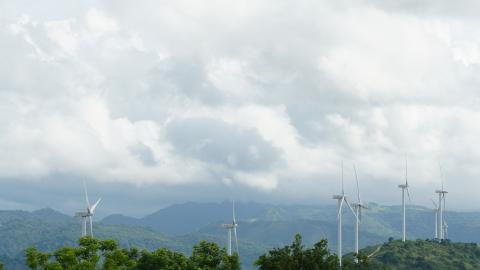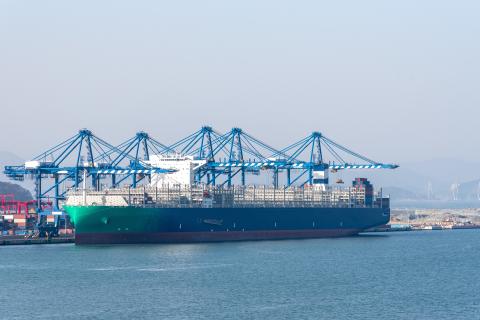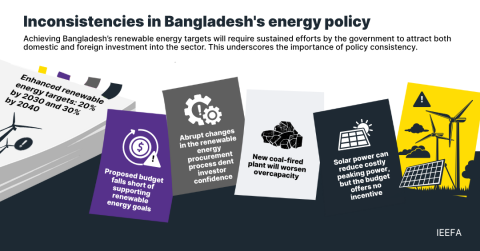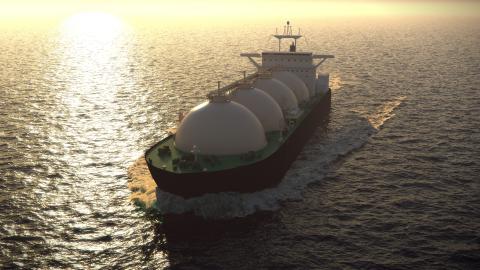IEEFA update: Vogtle nuclear reactor, a runaway project nobody needs
In announcing earlier this month that Southern Company was raising its subsidiary Georgia Power’s share of the already-too-expensive and long-delayed Vogtle nuclear project by $1.1 billion, CEO Tom Fanning increased the utility’s 45.7 percent stake in the plant to $8.4 billion.
It seems a highly misguided move.
While Fanning continued to defend the roughly 2,234 MW project, Southern shareholders will eat the bulk of the cost increase, all to maintain “momentum” on a project that is sorely lacking in that respect.
Fanning told analysts that Vogtle’s runaway costs “are reasonable and necessary” and “in the best long-term interests of investors, customers and other stakeholders.” Granted, Fanning said also that the company will not seek cost recovery from ratepayers.
Georgia’ regulators may take Fanning at his word, perhaps glad that they can continue to ignore the obvious: that the reactor project is no longer economic.
But a much more likely explanation for Fanning’s promise not to saddle customers with this latest Vogtle cost increase is that Southern’s executive team knows that if it sought further cost recovery the commission might finally determine that the plant is neither in ratepayers’ best interests nor needed to meet demand.
An American utility CEO and his executive team are in a tough spot.
Consider that in the latest mandatory six-month review of Georgia Power spending at Vogtle, which covered the period from July-December 2017, commission staff concluded that completing the reactor project was only “slightly economic” and—here’s the kicker—only “if the company meets its current cost and [commercial operating date] forecasts.”
That testimony was submitted in June 2018—two months before Southern’s latest cost increase announcement, which is to suggest that the additional costs unveiled by Fanning almost certainly render the plant completely uneconomic and would explain the company’s decision to soak shareholders rather than customers for the new charges.
More cost increases and construction delays may be in the offing, a possibility evident in Fanning’s early-August announcement and in a subsequent Q&A with analysts in which the CEO said the company needs to increase the size of its onsite labor force, particularly electricians and pipefitters, and do a better job of ensuring that workers are used productively.
Whether the company will be able to do that remains to be seen. Its track record on the project is spotty, at best.
THE DEGREE OF DIFFICULTY ASSOCIATED WITH FANNING’S PROJECTIONS FOR THE WORK THAT MUST BE DONE OVER THE NEXT 18 OR SO MONTHS if the project is to be completed on time was underscored in Georgia Public Service Commission testimony by staffers who have been vocal and accurate critics of the company’s construction schedules and cost estimates for years. These same staff experts predicted two years ago that labor productivity issues inside the reactor containment vessels could be a major problem.
Discussing the company’s plan to have the reactors complete by April 2021 and April 2022—which would be eight months earlier than the PSC’s currently approved delayed startup schedule (which is years after the company’s initial announced 2016/2017 completion dates), PSC staff said they were not confident the company could meet those targets. To hit those dates, they pointed out, Southern would have to increase the amount of work completed each month “to levels never before achieved on this project.”
They expanded on this point by saying the amount of work needed to be completed weekly would have to increase on the order of 50 percent.
Just meeting the approved startup dates of November 2021 and 2022 is likely to pose a serious challenge, the staff experts wrote, noting that “improvements in productivity and the required additions of craft personnel must occur in the immediate future for the potential to meet [those deadlines].”
“Gains in productivity must also be maintained over extended months,” they added.
Fanning and his executive team are in a tough spot. Asking the commission again to raise the amount owed by ratepayers clearly is a non-starter, at least at the moment, but analysts were none too happy with the company’s decision to bill shareholders instead. Moody’s downgraded the company’s debt, and stock analysts followed suit on their recommendations regarding Southern shares.
Given the company’s stubborn commitment to the project, and its failed Kemper gasification effort in Mississippi, it is all but inconceivable that Fanning will cancel the Vogtle plants.
But he should.
Dennis Wamsted is an IEEFA associate editor.
RELATED ITEMS:
IEEFA update: Duke Energy’s costly Edwardsport coal-gasification project continues to underperform
IEEFA update: Unmistakable trends in American wind and solar
IEEFA update: The U.S. nuclear project cancellation announcement heard ’round the world















